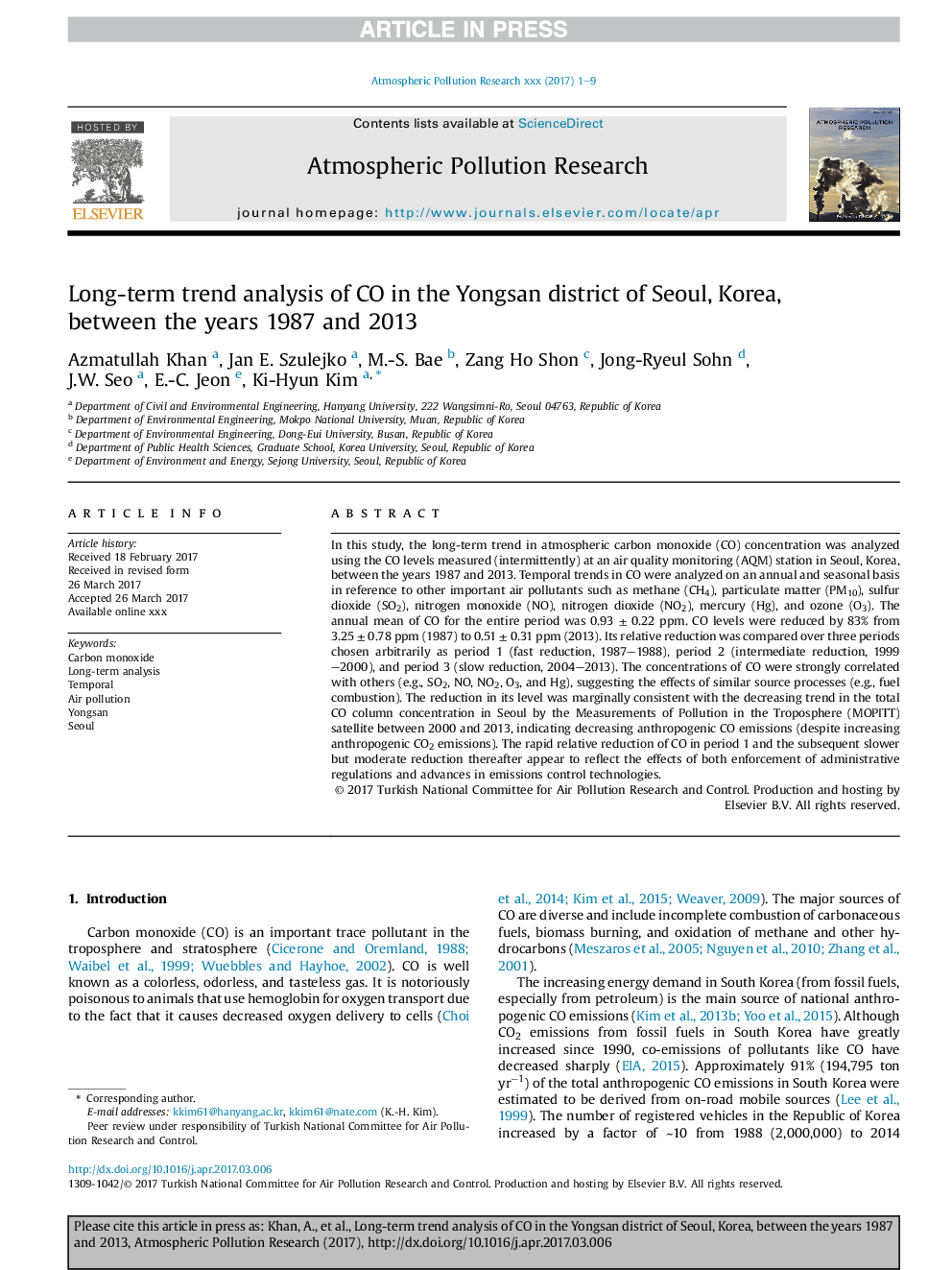| Article ID | Journal | Published Year | Pages | File Type |
|---|---|---|---|---|
| 8862723 | Atmospheric Pollution Research | 2017 | 9 Pages |
Abstract
In this study, the long-term trend in atmospheric carbon monoxide (CO) concentration was analyzed using the CO levels measured (intermittently) at an air quality monitoring (AQM) station in Seoul, Korea, between the years 1987 and 2013. Temporal trends in CO were analyzed on an annual and seasonal basis in reference to other important air pollutants such as methane (CH4), particulate matter (PM10), sulfur dioxide (SO2), nitrogen monoxide (NO), nitrogen dioxide (NO2), mercury (Hg), and ozone (O3). The annual mean of CO for the entire period was 0.93 ± 0.22 ppm. CO levels were reduced by 83% from 3.25 ± 0.78 ppm (1987) to 0.51 ± 0.31 ppm (2013). Its relative reduction was compared over three periods chosen arbitrarily as period 1 (fast reduction, 1987-1988), period 2 (intermediate reduction, 1999-2000), and period 3 (slow reduction, 2004-2013). The concentrations of CO were strongly correlated with others (e.g., SO2, NO, NO2, O3, and Hg), suggesting the effects of similar source processes (e.g., fuel combustion). The reduction in its level was marginally consistent with the decreasing trend in the total CO column concentration in Seoul by the Measurements of Pollution in the Troposphere (MOPITT) satellite between 2000 and 2013, indicating decreasing anthropogenic CO emissions (despite increasing anthropogenic CO2 emissions). The rapid relative reduction of CO in period 1 and the subsequent slower but moderate reduction thereafter appear to reflect the effects of both enforcement of administrative regulations and advances in emissions control technologies.
Related Topics
Physical Sciences and Engineering
Earth and Planetary Sciences
Atmospheric Science
Authors
Azmatullah Khan, Jan E. Szulejko, M.-S. Bae, Zang Ho Shon, Jong-Ryeul Sohn, J.W. Seo, E.-C. Jeon, Ki-Hyun Kim,
